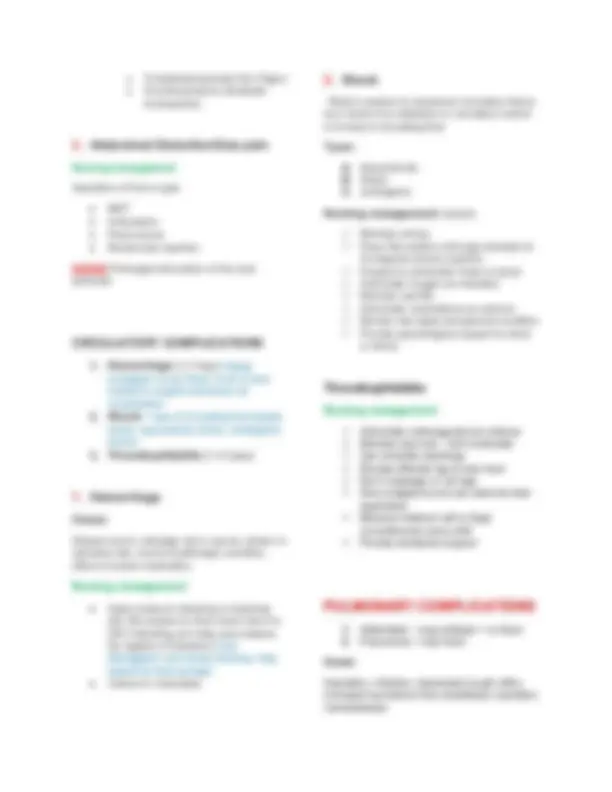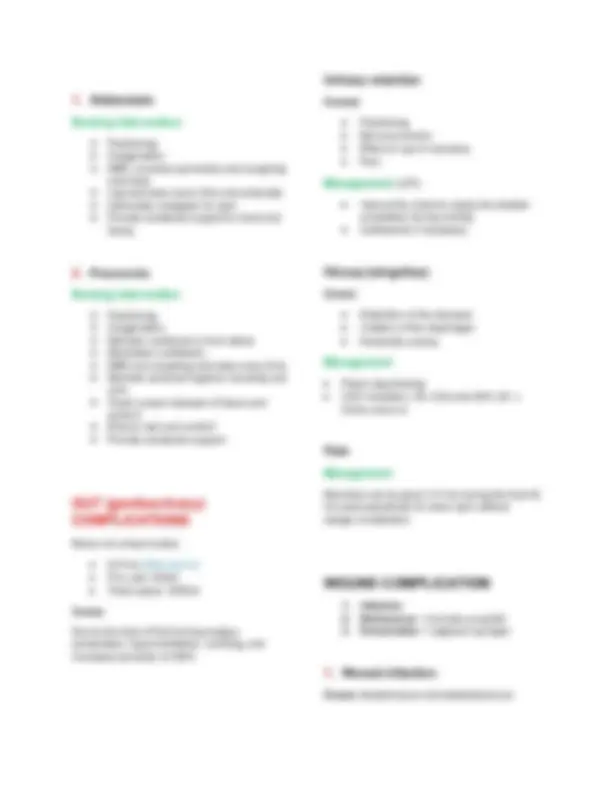





Study with the several resources on Docsity

Earn points by helping other students or get them with a premium plan


Prepare for your exams
Study with the several resources on Docsity

Earn points to download
Earn points by helping other students or get them with a premium plan
Community
Ask the community for help and clear up your study doubts
Discover the best universities in your country according to Docsity users
Free resources
Download our free guides on studying techniques, anxiety management strategies, and thesis advice from Docsity tutors
Postoperative care is essential for promoting recovery and reducing complications following surgery. It involves close monitoring of vital signs, pain management, wound care, and administering medications as prescribed. Additionally, postoperative care includes providing emotional support, assisting with mobility and rehabilitation, and educating patients and their families about home care instructions and potential warning signs of complications. Effective postoperative care plays a vital role in ensuring patients' comfort, safety, and successful recovery.
Typology: Study Guides, Projects, Research
1 / 5

This page cannot be seen from the preview
Don't miss anything!




care after surgery Postop will start Transferred to PACU unit to until the time patient made the 1st^ follow up
care unit)
2hrs stay = unstable patient. they would refer to ICU; bcs it would be that they would diff type of nursing care (need nila critical care kapag hindi sila stable after 2hrs post-surgery) No need doctors order regards to frequency of monitoring patient within 2hr period. Automatic within 2hrs, patient will be monitored every 15mins for VS, every 30mins/1hr for urine output (excrete anesthetic agent), Transferring of the patient to PACU is the responsibility of Anesthesiologist, Circulating Nurse. PACU room = quiet and clean
vascular system, myocardial contractility, blood vessel doesn’t have the capacity to dilate and constrict (nababawasan ang compensatory mechanism ng px) = respiratory depression general anesthesia (naapektuhan conciousness), regional (gising ang patient) Clients are discharged from PACU when:
1. Atelectasis
Ø Positioning Ø Oxygenation Ø DBE, incentive spirometry and coughing exercises Ø Leg exercises every 2hrs and ambulate Ø Administer analgesic for pain Ø Provide emotional support to client and family
2. Pneumonia
Ø Positioning Ø Oxygenation Ø Maintain nutritional or fluid status Ø Medication (antibiotic) Ø DBE and coughing exercises every 2hrs Ø Maintain personal hygiene including oral care Ø Teach proper disposal of tissue and sputum Ø Ensure rest and comfort Ø Provide emotional support GUT (genitourinary) COMPLICATIONS Return of urinary fuction
Narcotics can be given 3-4 hrs during the first 48 hrs post-operatively for sever pain without danger of addiction WOUND COMPLICATION
**1. Infection